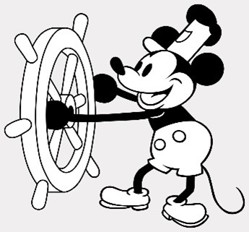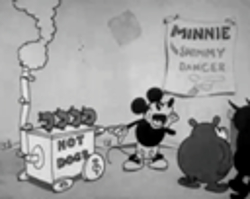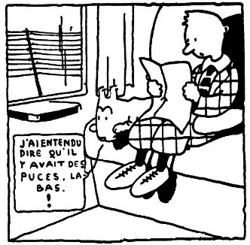- in Turkey
While copyright protection grants authors the exclusive right to exploit their creations, this protection is not indefinite. At the end of the term determined by the legislation of each country, the financial rights granted to the author expire and the work enters the public domain. The public domain process ensures that works become part of the collective heritage and thus continue to freely evolve and live on for generations. In this way, numerous masterpieces, from world classics to the compositions of Beethoven and Mozart to groundbreaking works of art such as the Mona Lisa, continue to inspire new generations as the common heritage of humanity.
Although the concept of public domain is philosophically highly inspiring, it is usually brought to the public agenda today with news about the expiry of the copyright term for well-known works. For example, Antoine de Saint-Exupéry's unforgettable work 'The Little Prince' became public domain as of 1 January 2015, leading to reprints by dozens of publishers as well as the launch of Little Prince-themed products. In recent years, this issue has attracted the most attention on a global scale with the discussions about Mickey Mouse becoming public domain.
Determining whether a work has entered the public domain is not always straightforward. The main reason for this is that copyright durations are not entirely uniform across the world. For example, under the Law on Intellectual and Artistic Works ("LIAW") in Türkiye, the term of copyright protection is, in principle, the lifetime of the author plus 70 years after their death.1 In contrast, in some countries, this term is 50 years, while in the United States, it can be extended up to 95 years.
As a general principle, when the protection term of a work expires, it is considered to have entered the public domain as of the first day of the following year—that is, on January 1. In fact, in the United States, January 1 is celebrated annually as "Public Domain Day."
As of January 1, 2025, the entry of the original versions of the comic book characters Popeye and Tintin—both of which have made significant contributions to popular culture—into the public domain has sparked a new debate over whether these works can really be used freely.
Popeye, known as Temel Reis in Türkiye, first appeared on January 17, 1929, as a side character in cartoonist E.C. Segar's comic strip Thimble Theatre, specifically in the story titled "Gobs of Work." He later began to emerge as a main character after separating Olive Oyl—who is known and loved as Safinaz in Türkiye—from her boyfriend "Ham Gravy," known as Kabasakal in Türkiye. The version of Popeye that entered the public domain 95 years after its publication is precisely this original version that appeared in the aforementioned comic strip.
Although this characterization, which has become a public domain in the USA, contains the characteristic features that we associate with Popeye today, such as the hoe tattoo, the pipe in the corner of his mouth and his sarcastic personality, it does not include, for example, the characteristic of growing his muscles by eating spinach; because Popeye first showed the characteristic of getting stronger with spinach in the cartoon published in 1932.

Therefore, it would not be accurate to say that the character of Popeye has entered the public domain as of January 1, 2025. What has actually entered the public domain is limited to the story "Gobs of Work" from cartoonist E.C. Segar's comic strip Thimble Theatre, published on January 17, 1929, and the version of the character as depicted within that specific context.

A similar debate was previously held on a much more global scale for Mickey Mouse. Indeed, a serious global debate started with the announcement that Mickey Mouse would enter the public domain on 1 January 2024. However, the characterization that is actually in the public domain here is a figure in Disney's black and white short cartoon 'Steamboat Willie' released in 1928, which is the first version of Mickey Mouse. Disney and other production companies extended the term of copyright protection in the US as a result of lobbying to delay the public domain ownership of copyrighted works such as Mickey Mouse. Accordingly, while the total copyright term in the US was 75 years with the 1976 Copyright Act, the "Sonny Bono Copyright Term Extension Act", also known as the "Mickey Mouse Act", which entered into force in 1988, extended the copyright term by 20 years for works published before 1978. As a result, it was not surprising that last year, on the same day that this character became public knowledge, the production of a low-budget horror film inspired by this character called "Mickey's Mouse Trap" (later renamed "The Mouse Trap") was announced.

An important feature -or deficiency- of the Mickey Mouse character in Steamboat Willie was that he was not wearing the big white gloves that we associate with this character. Also, Mickey Mouse never spoke in this cartoon. In addition to the new characters that entered the public domain in the USA this year, the copyright protection period of the short cartoon "The Karnival Kid" published on 31 July 1929 has also expired, and this film featured a Mickey Mouse character wearing his iconic white gloves for the first time and speaking on stage for the first time.
At this point, it should be noted that these characters have been in the public domain in Türkiye well before the last year. Pursuant to Additional Article 2 of the LIAW, the provisions regarding the term of protection under the LIAW also apply to foreign works produced in other countries and which have not entered the public domain in those countries as of 2001 when the Additional Article entered into force. In this framework, although the copyright term of Popeye in the USA expires in 2025, in Turkey, this date may be accepted as 2008, 70 years after the death of the illustrator E.C. Segar in 1938. Likewise, the versions of Mickey Mouse in the cartoons 'Steamboat Willie' and 'Carnival Kid' can be considered to have been in the public domain in Turkey since 2001 and 2002, respectively, with the expiry of 70 years from the date of publicity pursuant to Article 27/4 of LIAW2, if it is accepted that Disney is the legal entity that owns the rights.

With Tintin, the situation is a little different. The earliest versions of the young reporter Tintin and his dog Milou, first published in a Belgian newspaper in 1929 and created by Hergé - real name George Prosper Remi - in the story "Tintin in the Soviet Territories", entered the public domain in the USA on 1 January 2025. As discussed for Popeye and Mickey Mouse, the only character whose copyright has expired is the version of Tintin published in this newspaper, the image of which is shown on the left. However, since the copyright term under the LIAW continues for 70 years after the death of the illustrator, Tintin will not enter the public domain in Turkey until 2054, as Hergé passed away in 1983.
As can be seen, the concept of entering the public domain continues to have significant legal and cultural implications not only for classical works of art and literature but also for creations that have become an integral part of popular culture.
It is important to emphasize that the public domain status of a work does not necessarily mean it can be used completely freely. As illustrated by the examples above, governments may adopt different copyright regimes and durations, which can lead to variations in when and how works enter the public domain. Therefore, it is essential to consider in which country and under what conditions a work has become part of the public domain. Additionally, it should be kept in mind that the public domain concept applies only to copyright. Production companies may still hold trademark rights—potentially renewable indefinitely—for different versions or specific visual elements of a given character. As such, even when characters are considered to be in the public domain in Türkiye, care should be taken not to infringe upon other intellectual and industrial property rights.
Footnotes
1 Pursuant to Article 27/1 of the LIAW, "The term of protection shall last for the lifetime of the author and for 70 years after his death. If there is more than one author, this period shall end upon the expiry of 70 years after the death of the last remaining author."
2 "If the first author is a legal person, the term of protection shall be 70 years from the date on which the work was made public." According to the LIAW, the owner of a work is the person(s) who created it; therefore, it is accepted that this provision regarding the ownership of works by legal entities relates to cinema works created before 1995.
The content of this article is intended to provide a general guide to the subject matter. Specialist advice should be sought about your specific circumstances.



